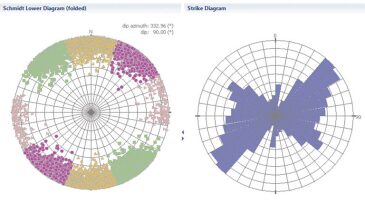Enhanced recovery
This paper discusses the effect of injected-polymer viscosity on various aspects of a project, from recovery to surface facilities, including both theoretical arguments and practical field experience—which do not always align.
This study leverages oil-fingerprinting technology and geochemical data to evaluate the fluid connectivity between a main field and its stepout wells.
This paper provides details of a pilot study conducted on multiple wells, showcasing the potential of a novel biotechnology in Bakken enhanced oil recovery.
-
SponsoredMesser and Nissan Chemical recently introduced a new Huff ’n’ Puff process that combines CO2 or N2 gas and nanoparticles for synergistic multi-spectrum recovery enhancement from aging, depleted wells.
-
This paper covers the staged field-development methodology, including analysis and evaluation of various development concepts, that enabled the company to optimize both completion design and artificial-lift selection, reducing downtime and lowering operating costs by nearly 50%.
-
This paper shares experience gained in the Ashalchinskoye heavy-oil field with a two-wellhead SAGD modification. As a result of a pilot for this technology in Russia, the accumulated production of three pairs of these wells is greater than 200,000 tons.
-
The First Eocene is a multibillion-barrel heavy-oil carbonate reservoir in the Wafra field, located in the Partitioned Zone between Saudi Arabia and Kuwait. After more than 60 years of primary production, expected recovery is low and provides a good target for enhanced-oil-recovery processes.
-
This paper studies the technical and economic viability of this EOR technique in Eagle Ford shale reservoirs using natural gas injection, generally after some period of primary depletion, typically through long, hydraulically fractured horizontal-reach wells.
-
As operators and asset owners worked continually to increase efficiency in oil production, they all realized that part of efficiency improvement is increasing recovery factors. Everybody now is extremely focused on recovering more from the reservoirs they have.
-
This paper provides a robust methodology for miscible CO2 WAG experimental-data acquisition and history matching.
-
To the best of the authors’ knowledge, this is the first surface-complexation-based model that describes fully ionic compositional dependence observed in ionically treated waterfloods in both sandstones and carbonates.
-
This paper presents technologies and best practices to improve oil recovery in mature fields through waterflooding optimization. These technologies have proved practical and cost-effective.
-
This paper presents the implementation of an approach for improving oil recovery by water-injection optimization using injection-control devices (ICDs) in unconventional reservoirs.













